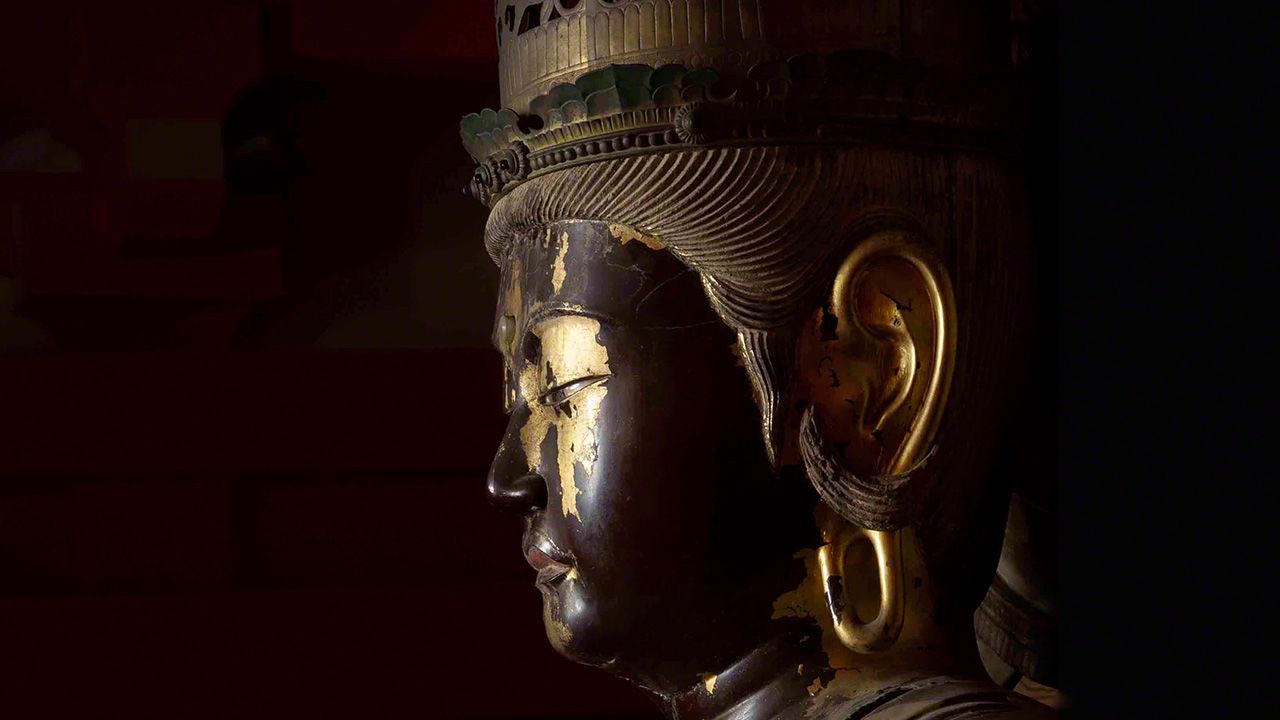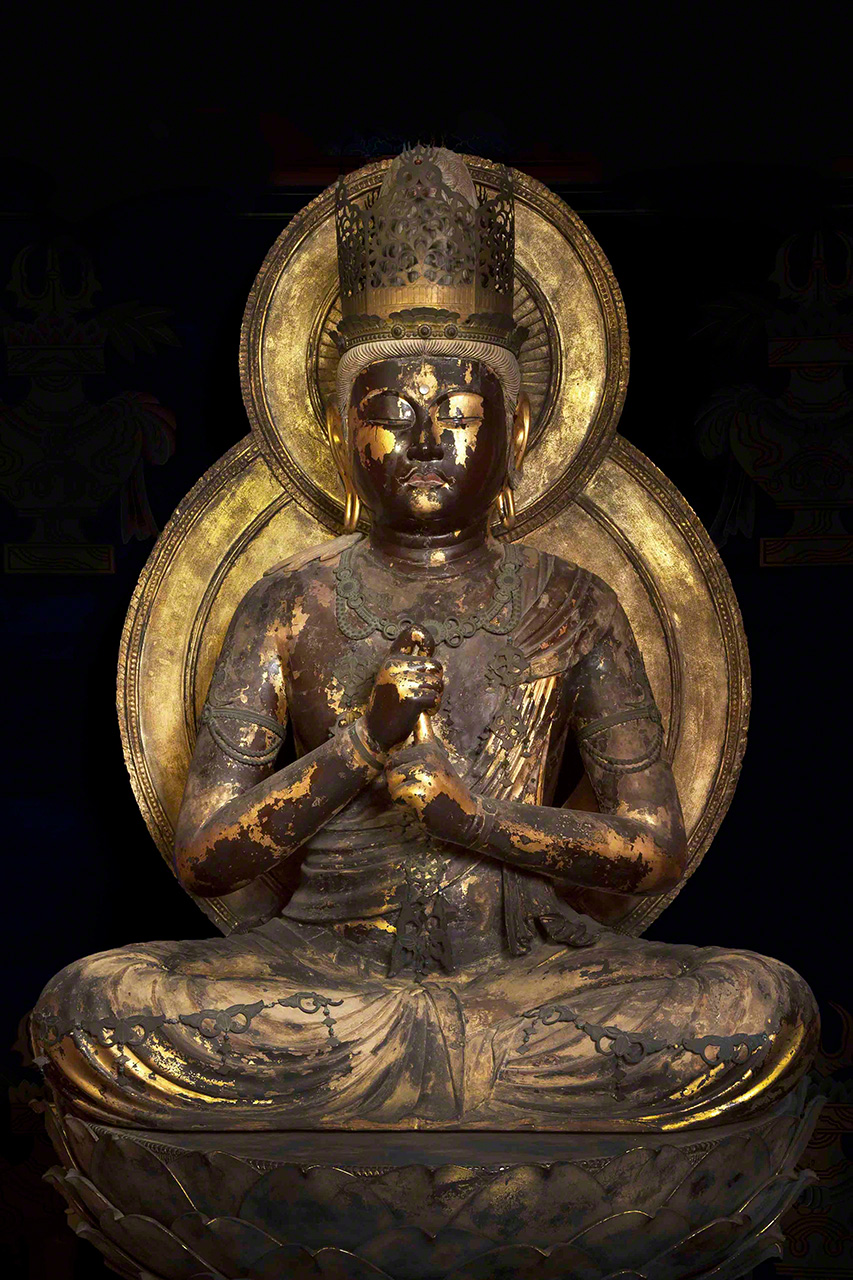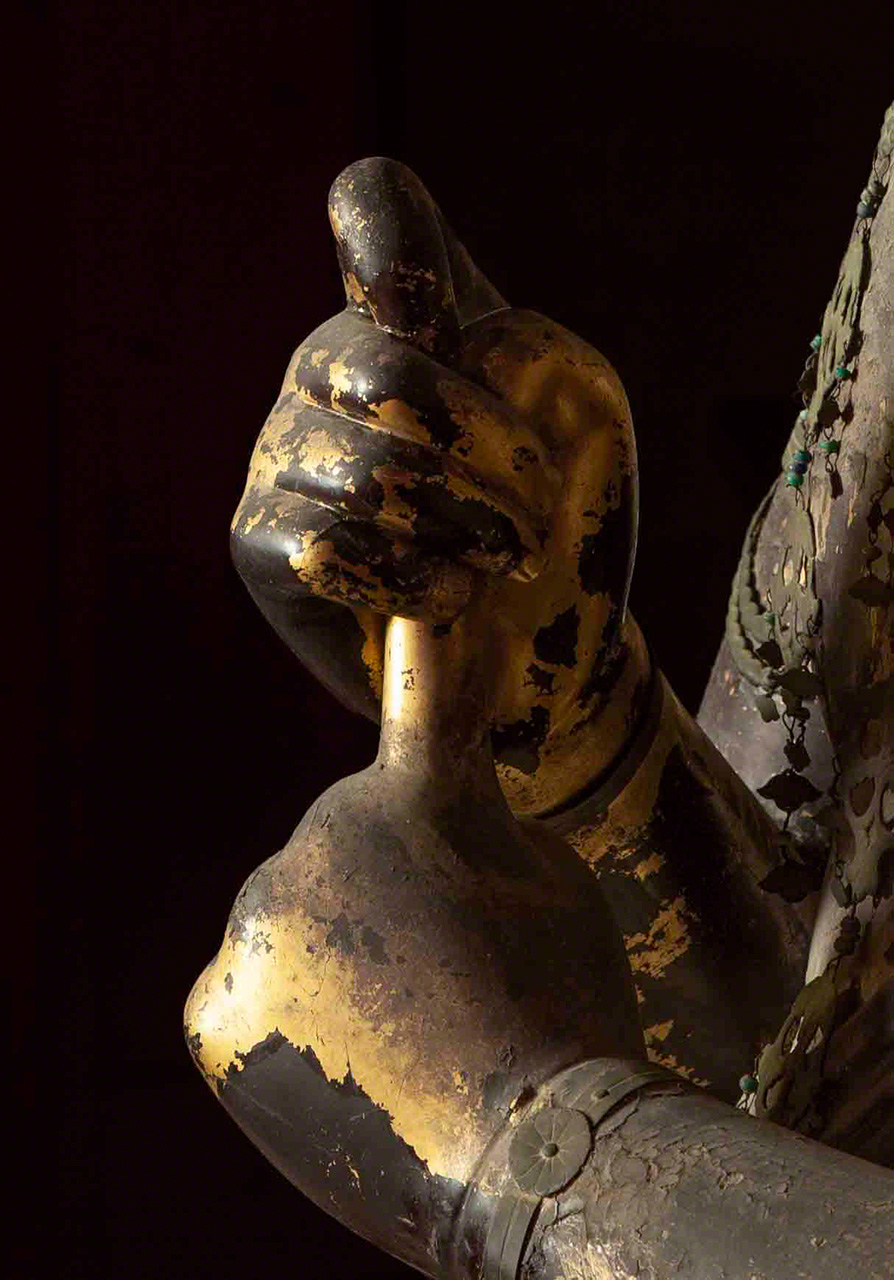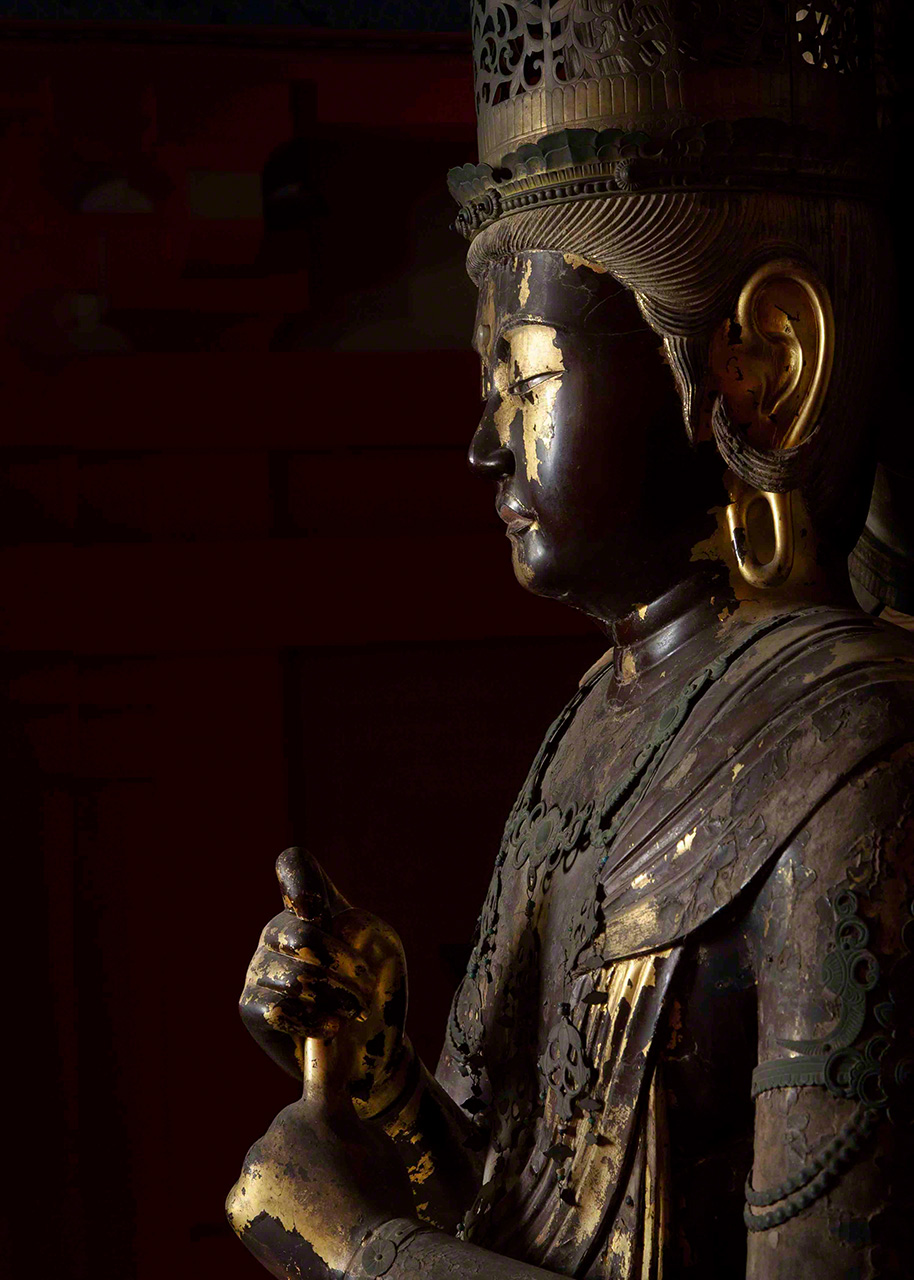
Seated Image of the Dainichi Buddha
Images Arts Culture History- English
- 日本語
- 简体字
- 繁體字
- Français
- Español
- العربية
- Русский
Unkei (c. 1150–1223) is probably the best-known individual talent in the history of Buddhist art in Japan. This debut work, a seated image of Dainichi Nyorai (the Mahāvairocana Buddha) at Enjōji, an ancient temple in the mountains outside Nara, is his earliest known work. He would have been in his twenties when he sculpted this piece. Like much of Unkei’s work, the sculpture exerts a powerful, almost uncanny fascination—the eye never seems to tire of looking at it.

(© Muda Tomohiro)
Unkei’s name is normally associated with the glories of the Kamakura Period (1185–1333), but this statue, made from hinoki wood (a type of cypress) using the yosegi-zukuri technique, in which the main part of the statue is constructed from two or more pieces of wood, dates from the end of the Heian Period. An inscription in ink on the back of the pedestal reveals that work on the statue started on the twenty-fourth day of the eleventh month, 1175, and was completed in the tenth month of the following year. The same inscription gives the name of the person who made the sculpture: “Unkei, son and apprentice of the great sculptor Kōkei.” Normally a piece of this size would take around three months to make—11 months seems an unusually long time. We can perhaps imagine the father giving his son Unkei exacting instructions as he worked to finish his first masterpiece—or perhaps Unkei himself was determined to get things exactly right.
Dainichi is an important figure in esoteric Buddhism, whose name (meaning “Buddha of Great Illumination”) expresses the sense that the radiance of his teachings extends everywhere throughout the universe. Esoteric Buddhism imagines the universe as consisting of two realms: the diamond realm that symbolizes ultimate wisdom and the womb or matrix realm, symbolic of compassion. At the center of the two realms sit two Buddhas, each traditionally depicted with different mudras.
This sculpture depicts the “knowledge fist” mudra (chiken-in), in which the Buddha raises the forefinger of his left hand in front of his chest, and encloses it in his right hand, symbolizing the compassion of the Buddha for all living things. This mudra is associated with the Dainichi Buddha of the diamond realm. The mudra associated with the Dainichi of the womb realm, incidentally, is the “meditation” mudra (zenjō-in), in which the outstretched fingers of both hands are rested on top of each other in front of the abdomen. This is the hand position commonly used by practitioners of Zen meditation.

(© Muda Tomohiro)
In some respects—the parallel arrangement of the Buddha’s robes, and the gentle lines of the torso—the image retains the characteristics of Heian Period sculpture. But the resolution in the facial features and the inlaid crystal eyes, along with the sense of coiled tension in the chest and stretched sinews in the back, mark a departure from the balanced, understated Heian norms.
Another thing that is markedly new the striking open space between the hands forming the “wisdom fist” mudra and the body. This surprising arrangement is the result of artistic choices that create an aesthetic of physical form that transcends realism, presaging the sensibility that would give rise to so many remarkable sculptures during the rest of Unkei’s life. It would be no exaggeration to say that this sculpture marks the start of a remarkable new period in the history of Buddhist art in Japan.

(© Muda Tomohiro)
Seated Image of Dainichi Nyorai (the Buddha Mahavairocana)
- Size: 98.2 cm
- Date: Late Heian Period
- Enjōji (Nara Prefecture) (visitors wishing to view it should confirm whether it is on display in advance)
- National treasure
(Originally published in Japanese. Banner photo: Seated image of Dainichi Nyorai, Enjōji temple. © Muda Tomohiro.)


